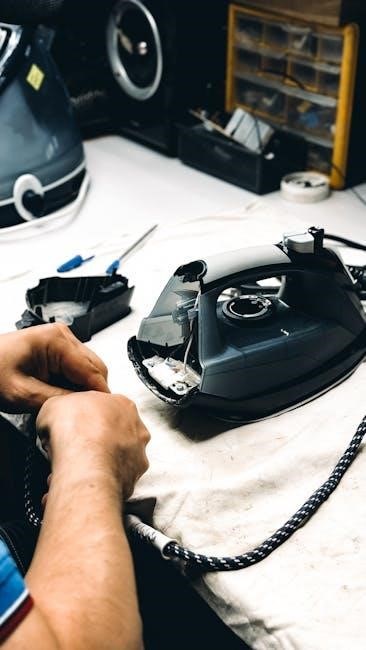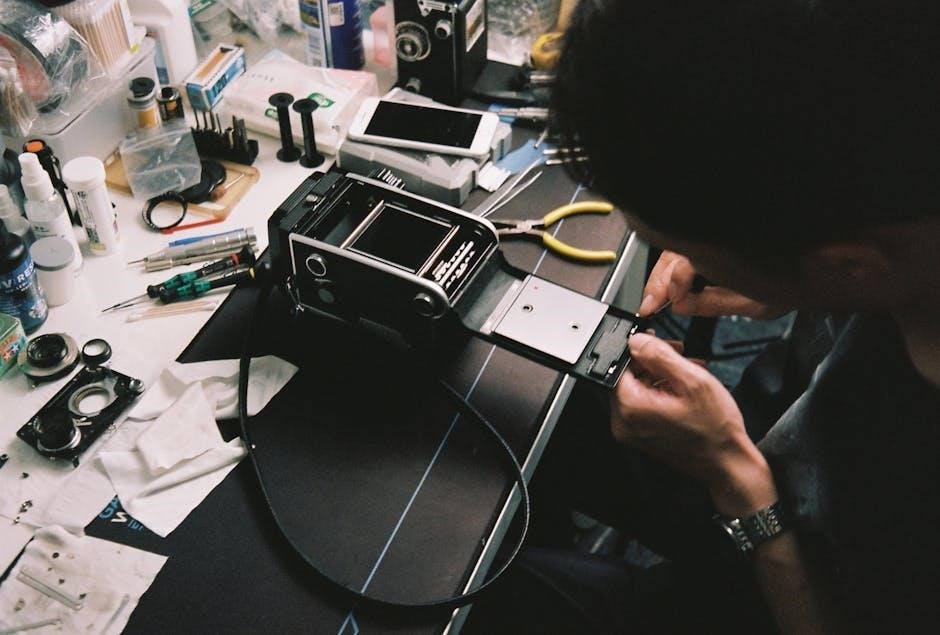A structured rehabilitation protocol after hip labral repair is crucial for ensuring proper healing, minimizing complications, and optimizing functional recovery. It guides patients through safe post-operative care.
1.1 Overview of Hip Labral Repair
Hip labral repair is a minimally invasive surgical procedure addressing labral tears or damage in the hip joint. The labrum, a cartilage ring, plays a crucial role in joint stability and lubrication. Arthroscopy is commonly used to visualize and repair the labrum, often combined with treatments for femoroacetabular impingement (FAI). The goal is to preserve joint function, alleviate pain, and restore mobility. Post-operative care and rehabilitation are tailored to the patient’s condition, focusing on protected weight-bearing, pain management, and gradual strengthening. Proper rehabilitation is essential to ensure optimal healing and prevent complications, with structured protocols guiding patients through each recovery phase. This approach aims to enhance long-term outcomes and return to normal activities safely.
1.2 Importance of a Structured Rehabilitation Protocol
A structured rehabilitation protocol is vital for hip labral repair patients, ensuring a safe and effective recovery. It minimizes the risk of complications, such as re-tears or persistent pain, by providing clear guidelines for each recovery phase. The protocol addresses key aspects like protected weight-bearing, pain management, and gradual strengthening, tailored to the patient’s specific needs. Early phases focus on reducing inflammation and restoring range of motion, while later stages emphasize functional exercises and proprioception. Adherence to the protocol promotes optimal tissue healing, enhances joint stability, and facilitates a successful return to daily activities and sports. A well-structured plan also supports long-term joint health, reducing the likelihood of future degeneration or the need for additional surgeries. Proper progression ensures patients achieve maximal functional outcomes and improved quality of life.

Key Components of the Hip Labral Repair Protocol
The protocol includes immediate post-op care, immobilization, protected weight-bearing, pain management, and inflammation control to ensure proper healing and minimize complications after hip labral repair.
2.1 Immediate Post-Operative Care
Immediate post-operative care focuses on pain management, swelling reduction, and protecting the repair site. Patients are advised to use ice and elevation to minimize inflammation. Pain is managed with prescribed medications, and activity is restricted to avoid stressing the hip joint. Immobilization devices, such as braces, may be used to protect the repair. Weight-bearing is typically limited, with patients using crutches for mobility. Monitoring for signs of complications, such as increased pain or swelling, is critical during this phase. Patients are also educated on wound care and the importance of adhering to post-operative instructions to promote healing. This phase sets the foundation for a successful rehabilitation process.
2.2 Immobilization and Protected Weight-Bearing
Immobilization and protected weight-bearing are critical in the early stages of recovery to safeguard the labral repair. Patients are often placed in an orthopedic brace to maintain hip stability and restrict harmful movements. Weight-bearing is typically limited, with patients using crutches to avoid placing stress on the operative hip. Partial weight-bearing is gradually introduced over 3-4 weeks, with progression to full weight-bearing as healing allows. Proper alignment and avoidance of deep hip flexion or external rotation are emphasized to prevent strain on the repair. This phase ensures the labral tissue heals without disruption, minimizing the risk of complications. Compliance with weight-bearing restrictions is essential for optimal outcomes and is closely monitored by the rehabilitation team.
2.3 Pain Management and Inflammation Control
Effective pain management and inflammation control are vital to ensure patient comfort and promote healing after hip labral repair. A multimodal approach is often utilized, combining ice therapy, nonsteroidal anti-inflammatory drugs (NSAIDs), and, in some cases, short-term use of pain medication. Cryotherapy helps reduce swelling and discomfort, while NSAIDs address inflammation without the risks associated with narcotics. Manual therapy and gentle exercises are introduced cautiously to avoid aggravating the repair. Patient adherence to prescribed protocols ensures optimal recovery, minimizing the risk of prolonged pain or inflammation. Regular monitoring by healthcare providers allows for timely adjustments to the treatment plan, ensuring a smooth transition into the next phase of rehabilitation.

Phases of Rehabilitation
The rehabilitation process is divided into three distinct phases: acute (0-4 weeks), intermediate (4-8 weeks), and advanced (8-12 weeks), each focusing on specific recovery goals.

3.1 Acute Phase (0-4 Weeks)
The acute phase focuses on reducing pain and inflammation while protecting the repair site. Patients typically use crutches for partial weight-bearing, avoiding deep hip flexion and external rotation. Manual therapy, gentle range-of-motion exercises, and core stabilization are emphasized to maintain joint mobility without stressing the labral repair. Pain management strategies include ice therapy and anti-inflammatory medications. Patients are advised to avoid active straight-leg raises and hip flexion to prevent irritation. The goal is to create a stable environment for initial healing, with gradual progression based on symptom response and clinical assessment.
3.2 Intermediate Phase (4-8 Weeks)
The intermediate phase emphasizes strengthening and restoring functional movement patterns. Patients progress to weight-bearing exercises, such as mini squats and step-ups, to enhance hip and core stability. Proprioceptive training, like single-leg stands, improves balance and joint awareness. Gentle resistance exercises, including cycling with minimal resistance, are introduced to strengthen the surrounding muscles without overloading the repair. Manual therapy continues to address any remaining soft tissue restrictions. Patients are monitored for proper form and control to prevent compensatory patterns. The focus shifts from protection to rebuilding strength and mobility, preparing the hip for more dynamic activities while minimizing the risk of re-injury.
3.3 Advanced Phase (8-12 Weeks)
The advanced phase focuses on restoring full functional mobility and preparing the patient for return to activity. Patients progress to dynamic exercises, such as plyometrics and agility drills, to enhance power and coordination. Resistance training with bands or weights is increased to further strengthen the hip and surrounding muscles. Emphasis is placed on sport-specific or activity-specific movements to address the patient’s individual needs. Flexibility exercises are continued to maintain range of motion. Criteria for progression include achieving full strength symmetry, pain-free range of motion, and the ability to perform complex movements without compensation. This phase sets the foundation for a successful return to pre-injury activities while minimizing the risk of future complications.

Return to Activity and Long-Term Outcomes
Return to activity is guided by clinical outcomes and functional restoration. The protocol ensures proper healing and minimizes recurrence, supporting long-term joint health and patient satisfaction.
4.1 Criteria for Progression
Progression through the rehabilitation protocol is based on clinical milestones, including pain reduction, improved range of motion, and strength. Patients must achieve symmetric ROM and adequate muscle control before advancing. Avoiding activities that stress the repair site is crucial during the early phases. Pain and swelling must be minimized, and strength and functional abilities must be restored progressively. Manual therapy and exercises are tailored to ensure proper healing and prevent complications. The goal is to ensure the patient can return to normal activities safely and effectively, with focus on long-term joint health and functionality.
4.2 Avoiding Complications and Ensuring Proper Healing
Avoiding complications requires strict adherence to post-operative guidelines, including limited weight-bearing and avoiding deep hip flexion or external rotation. Pain and swelling must be monitored, with activity adjusted to prevent overloading the repair site. Early detection of complications, such as infection or repair failure, is critical. Proper wound care and adherence to medication regimens are essential. Manual therapy and gentle exercises promote healing without stressing the repair. Patients must avoid activities that could disrupt the labral repair, such as heavy lifting or high-impact movements. Regular follow-ups with the healthcare team ensure proper healing and address any concerns promptly. The goal is to minimize risks and support optimal recovery for long-term joint health.



